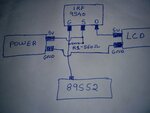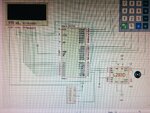
- Joined
- Jan 22, 2008
- Messages
- 53,108
- Helped
- 14,792
- Reputation
- 29,871
- Reaction score
- 14,291
- Trophy points
- 1,393
- Location
- Bochum, Germany
- Activity points
- 301,062
Re: 20x4 lcd gets dim when on
I concede that you can be facing all kinds of problems including the problem to arrange your results when starting electronics.
So please try to report your findings completely, including the suggested circuit schematics to help everybody to avoid talking on cross purposes.
I concede that you can be facing all kinds of problems including the problem to arrange your results when starting electronics.
So please try to report your findings completely, including the suggested circuit schematics to help everybody to avoid talking on cross purposes.



